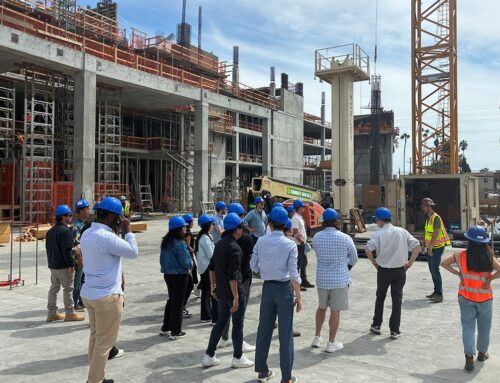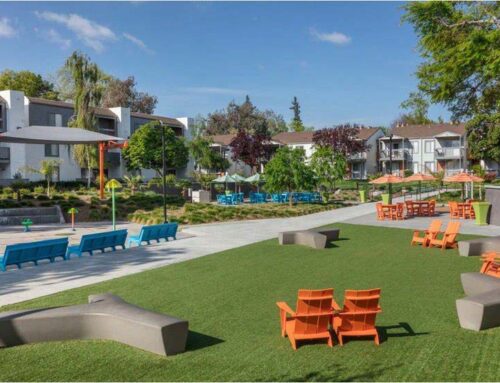Tackling Affordable Housing in the Northeast
Standard Communities’ Sean Carpenter delves into the challenges affecting the region’s multifamily market, but also weighs in on signs of growing economic vitality across the area’s main metros.
The pandemic applied even more pressure to the country’s already undersupplied affordable housing sector. According to a recent paper by Moody’s Analytics, the annual supply is behind demand by about 100,000 units nationally.
Northeastern metros like Philadelphia and Boston were experiencing a decline in affordability even before the health crisis. High land and construction costs, strict zoning regulations and other factors all contributed to the region’s lack of affordable housing supply.
To understand how developers are navigating the most recent challenges and what the path to recovery looks like, Multi-Housing News reached out to Standard Communities’ Director of Northeast Development, Sean Carpenter. He recently joined the company from nonprofit developer AHSC Inc. and has more than 20 years of experience in affordable housing development, entitlements, financing and policy.
How have multifamily investors in the Northeast reacted to pandemic-induced challenges so far?
Carpenter: Early on, there was a push to protect tenancy, including eviction bans driven by valid concerns that those who lost their jobs could also lose their homes. For example, Standard Communities, with a significant portfolio of affordable multifamily housing, committed to an Eviction Diversion Pledge in cooperation with government agencies and community organizations.
Investors are also increasing their presence in Northeast markets, motivated by the economic and social returns of affordable housing. Recognizing the need for affordable housing in the Northeast, within the last six months, Standard has completed its first three affordable and workforce housing transactions in Massachusetts and also hired me with the mission to identify ground-up affordable development opportunities.
Philadelphia has a long recovery ahead of itself, with unemployment rates still struggling to catch up to the national average and a decline in affordable housing inventory. How are developers approaching this market?
Carpenter: Any major city in the Northeast faces an affordability crisis, particularly those with extensive economic dependence on service industries, tourism, and major entertainment and professional sports events. Take restaurants for example. The pandemic crippled their businesses for over a year, and many have closed permanently. Now, many restaurant workers must find new jobs, perhaps with lower wages.
Less income obviously impairs their ability to pay rent, raising their housing cost burden that was already high throughout the Northeast. That harsh reality is underscored by a recent Harvard JCHS report revealing a loss of four million affordable housing units nationwide.
Even with the increasing need, investors and developers of affordable housing in the densely populated Northeast are challenged by the high cost of land, as well as construction costs above the national average, in addition to zoning regulations that discourage the development of workforce and affordable housing. These factors necessitate affordable and workforce housing investors to seek creative and nimble approaches to preserving and creating housing in the Northeast.
A recent ULI report suggests that naturally occurring affordable housing in Philadelphia might be an avenue for recovery. Do you agree with this statement?
Carpenter: Naturally occurring affordable housing can be an excellent opportunity to increase affordable units while mitigating the overall cost burden. For example, in the last six months, Standard Communities has spearheaded public-private partnerships to preserve naturally occurring affordable housing and create 650 units of dedicated workforce housing in California and in the East.
Government agencies at all levels should seek out public-private partnerships and other innovative solutions to bring additional resources to solve the affordable housing crisis. With committed public partners, there are ways to provide high quality affordable and workforce housing to those in need, benefiting entire communities.
A similar story of a rocky recovery is at play in the Boston metro as well. How are investors prepared to tackle the challenges of this market?
Carpenter: We don’t need more studies to underscore the need for low-cost housing. The crisis of affordable and workforce housing is more than a financial problem. It is also a land use problem.
Cities and towns throughout the region “spot zone” to exclude higher-density multifamily housing. If zoning boards and planning commissions don’t approve affordable or workforce housing residential developments, the problem can’t be solved.
Thankfully, the Massachusetts legislature has tried to address the problem, and the governor and legislature were able to enact legislation allowing for affordable multifamily housing in transit-oriented areas, smart growth initiatives and increased incentives to municipalities to allow more developments to exist. This legislation will help during the rocky recovery.
How did the flight toward the suburbs influence the housing market in Boston?
Carpenter: With the pandemic subsiding and people returning to offices rather than working remotely, traffic on the Southeast Expressway is dramatically rising. This increase in traffic reflects a growing movement back into the Boston core for many. Boston is a terrific city to live in, with appealing neighborhoods that give it a small-town feel. People want to live and work here, and Standard Communities is energetically pursuing development opportunities in and near Boston.
In Greater Boston, a significant amount of real estate is comprised of underutilized assets, such as vacant office buildings and shuttered college campuses, among others. Do you think these represent a viable option for affordable housing investment?
Carpenter: Repurposing existing structures for workforce and affordable housing is a successful strategy around the country. Converting some of these assets into viable housing often requires changes in zoning since most are zoned nonresidential. Standard and its industry advocate on behalf of families seeking affordable and workforce housing, and we support zoning changes required to create much-needed housing through adaptive reuse of existing assets.
President Biden announced a $2.3 trillion infrastructure proposal, with $213 billion set aside for supporting affordable housing. Do you expect this capital infusion to ease the affordable housing crisis in the Northeast in the next few years?
Carpenter: In the densely populated Northeast, the high cost of land and the construction costs to develop affordable and workforce housing necessitate federal support. Washington has the responsibility—and the ability—to play a crucial and proactive role to stimulate the development of affordable and workforce housing as a significant component of America’s infrastructure recovery.
How do you see the region’s affordable housing sector performing this year?
Carpenter: The needed elements of a strong recovery are emerging. With the pandemic subsiding, businesses are reopening, people are returning to work, and consumers are buying and traveling again, and we are starting to see indications of growing economic vitality. Add to that positive context stable interest rates, incentives for development, reform of restrictive zoning and, most importantly, strong and growing demand for workforce and affordable housing, and we are optimistic that the affordable housing sector in New England will be strong this year and into 2022.
Originally published in Multi-Housing News Issue










